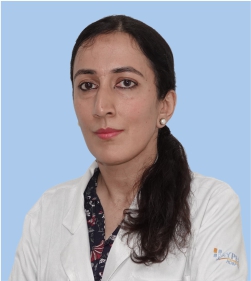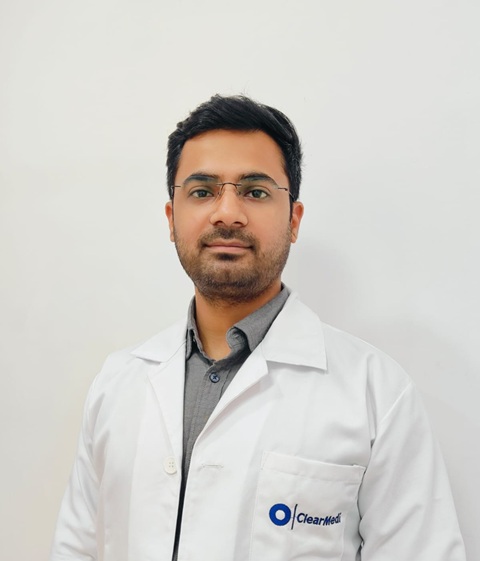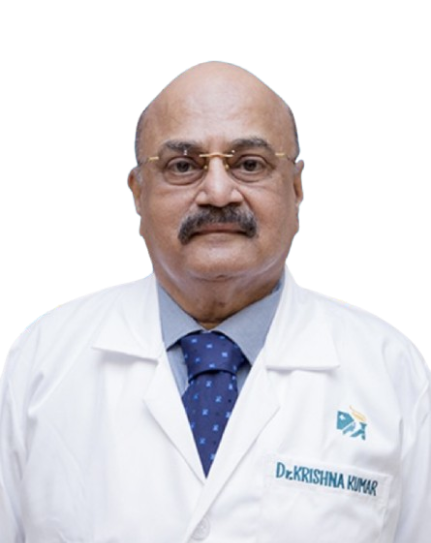Adenoidectomy (Adenoid Removal): Meaning, Surgery, Procedure

Treatment Duration
15 Minutes
------ To ------30 Minutes
Treatment Cost
₹ 40,000
------ To ------₹ 80,000

Table of Contents
- What is Adenoidectomy?
- Conditions treated with Adenoidectomy
- Who needs Adenoidectomy?
- How is Adenoidectomy performed?
- What to expect before and on the day of Adenoidectomy?
- What to expect after Adenoidectomy?
- Benefits of Adenoidectomy
- Risks and complications of Adenoidectomy
- Risks of delayed Adenoidectomy
- Cost of Adenoidectomy
Adenoidectomy is the surgical removal of the abnormally enlarged adenoid glands that are caused due to bacterial or viral infections, allergies or other reasons. The procedure is also known as Adenoid Removal.
Adenoidectomy is one of the most commonly performed procedures in children. This procedure is usually done on an outpatient basis. The procedure takes 15 to 30 minutes to complete. The recovery after the surgery is generally quick and effortless.
| Surgery Name | Adenoidectomy |
| Alternative Name | Adenoid Removal |
| Diseases Treated | Abnormally enlarged adenoid glands |
| Benefits of the Surgery | Reduced mouth breathing, Ear infections, Throat infection, Ear aches |
| Treated by | Otorhinolaryngologist (ENT surgeon) |
You can check Adenoidectomy Cost here.
What is Adenoidectomy?
Adenoidectomy is the surgical removal of the abnormally enlarged adenoid glands. The procedure is also known as Adenoid Removal.
Anatomy and Physiology of Adenoid Glands
Adenoids, also known as the nasopharyngeal tonsil, are masses of lymphoid tissue behind the nasal pharynx, above the roof of the mouth. They are pyramidal-shaped structures composed of lymphoid tissue. The pyramid's tip is extended towards the nasal septum, and the base sits at the posterior wall of the nasal pharynx. The adenoidal surface is invaginated by several folds with some crypts. The adenoid is covered with the ciliated epithelium as the respiratory tract.
The function of the adenoids is protective as they are part of the immune system. This ring of tissue is the first site to encounter microorganisms and pathogens as they are located at the entry of the respiratory and alimentary tract. White blood cells circulate through the adenoids and other lymphoid tissue, reacting to the foreign bodies.
Adenoids are bigger when in children. As an individual age, these adenoids start to shrink and usually disappear with time.
Expert Doctors (10)
NABH Accredited Hospitals (10)


Conditions treated with Adenoidectomy
Adenoidectomy is generally performed to remove the adenoids that become enlarged, swollen or chronically infected. This can be due to infections, allergies or other reasons. Adenoidectomy also helps treat other conditions such as:
- Breathing problems
- Ear infections
- Snoring issue
- Sleep apnea
Who needs Adenoidectomy?
Adenoidectomy procedure is one of the most commonly performed procedures in children. In children, due to bacterial or viral infections, allergies or other reasons, the adenoids may swell and get infected, leading to adenoiditis. Some of the children may also be born with abnormally enlarged adenoids.
How is Adenoidectomy performed?
Adenoidectomy is a short and straightforward procedure usually done on an outpatient basis. The procedure usually takes 15 to 30 minutes to complete, depending on the patient's age. Adenoids are removed under general anaesthesia (medication used to reduce the sensation in the body) by a specialized team of anaesthetist, otorhinolaryngologist (ENT surgeon), and other medical staff. The following steps are carried out during the procedure:
- For surgery, the patient will be placed in a rose position (the surgeon sits behind the patient, and the patient’s neck and head are extended).
- The surgeon will then administer general anaesthesia to the patient.
- The surgeon will widely open the mouth of the patient using a small tool known as a retractor. Other than the surgical site, the rest of the patient’s body will be draped (covered with a sterile material) to reduce the risk of infection at the surgical site.
- The surgeon will then remove the adenoid glands using one of the following surgical methods. The surgical method to be used will depend on the surgeon.
- Electrocautery: a procedure in which electricity is used to heat and remove the tissue.
- Coblation: a procedure in which radiofrequency (RF) energy is used to remove the tissue.
- A cutting tool called a debrider can also be used to remove the adenoid tissue.
- The surgeon will also use absorbent material or an electrical device to stop the bleeding.
- Post-surgery, the patient will be shifted to a recovery room to monitor vitals and post-operative recovery.
- The patient’s vitals will also be monitored throughout the procedure.
What to expect before and on the day of Adenoidectomy?
Before the adenoidectomy, the doctor/surgeon will discuss and prepare the patient for the surgery. These steps often involve:
Before Adenoidectomy
Before undergoing adenoidectomy, the patient’s ENT specialist will discuss with following:
- The ENT specialist will inform the patient whether to stop taking any medications.
- The patient will be advised to avoid taking medications like ibuprofen or aspirin a week before surgery, as these medicines cause blood thinning.
- The ENT specialist may also prescribe some medicines that the patient needs to take on the day of the surgery. The patient should take these medicines with a sip of water.
- If the patient is an infant, then the mother of that infant may feed the breast milk or formula milk six hours before surgery.
- The ENT specialist will examine the patient’s adenoid glands by placing a camera inside the nose or via an X-ray.
- The ENT specialist will also recommend some routine tests a few days before the surgery which include:
- Urine test: To check for diabetes and infection in the urinary tract.
- Blood tests: To check for blood type, infection, blood clotting time, and anaemia (a condition in which the body does not have enough blood cells to carry oxygen to the entire body).
- Chest X-ray or magnetic resonance imaging (MRI) scan: To rule out any problems associated with the lungs or the heart.
- Polysomnogram (sleep study): If the patient has obstructive sleep apnea, the ENT specialist will conduct this test or an X-ray to check for nasal blockage.
- The patient should inform the ENT specialist if he/she has a cold or throat problem within seven days before surgery.
- The surgeon will postpone the surgery if the patient has a fever or cough as it can cause complications during surgery.
On the day of Adenoidectomy
- The patient should go to the hospital before the scheduled time.
- The patient or his/her parent will be asked to sign the consent form before the surgery.
- If the patient is a child, then his/her stomach must be empty on the day of surgery.
- The patient will be instructed to remove his/her street clothes and jewellery and wear a hospital gown.
- A nurse will place an intravenous catheter in the patient’s hand or forearm, and then general anaesthesia will be administered.
- The vitals of the patient will also be monitored.
- The patient will be shifted to the operation theatre for the procedure.
What to expect after Adenoidectomy?
The patient almost always recovers to a healthier life with far fewer breathing and ear problems after the procedure. A patient who has undergone adenoidectomy can expect the following after the surgery:
The recovery process at the hospital
- Post-surgery, the patient will be moved to the hospital ward so that he/she can recover.
- In the case of children, they may temporarily have a sore throat, ear aches, bad breath, or stuffy-feeling nose as he or she recovers.
- The ENT specialist will prescribe some medications such as painkillers.
- In case the procedure is performed in the afternoon, and if the patient requires medical observation, they will be advised to remain in the hospital for one night.
Recovery process/expectation after hospital discharge
- The patient should follow all the instructions and medications as prescribed by the ENT specialist.
- In case the patient is a child, then
- Avoid school for five days to avoid infection development.
- He/she should avoid a smoky environment and individuals with cough/cold.
- Avoid playing rough sports for a week post-surgery.
- Avoid blowing the nose for seven days after surgery. Use a cool-mist humidifier if their nose gets stuffy.
- Dietary habits:
- The patient would be able to eat and drink within a few hours post-surgery.
- To avoid dehydration, the patient should drink plenty of water and fluids.
- Initially, the patient should consume soft foods like soups, fruit juices, or mashed potatoes.
- Children can start eating foods regularly depending on their comfort.
- The patient can also be given medicines such as paracetamol to relieve pain so that he/she can swallow food easily. A painkiller can also be given an hour before the meal.
First follow-up appointment
- The ENT specialist will recommend a follow-up three to four weeks after surgery.
- The ENT specialist will check how the patient is recovering during the follow-up.
- The ENT specialist might also change the medication or advise the patient to continue with the previous medication for some more time, depending on the condition and recovery of the surgical area.
- The ENT specialist will advise the patient for further timely follow-ups as well.
Benefits of Adenoidectomy
Adenoidectomy is a simple procedure and can have a positive impact on the patient’s quality of life. Below mentioned are some of the benefits of adenoidectomy:
- Fewer throat infections
- Reduced mouth breathing
- Reduced ear infections
- Improved vocal quality
- Reduced ear fluid build-up and ear aches
Risks and complications of Adenoidectomy
An adenoidectomy is a safe procedure and complications are rare. However, as with any type of surgery, adenoidectomy has few complications associated with it. The risks and complications of adenoidectomy include:
- Excessive bleeding
- Infection
- Permanent changes in vocal quality
- Risks from the use of anaesthesia
- Breathing problems
- A tooth being knocked or chipped during the operation
When is consultation with the doctor needed?
The patient can consult the doctor if he/she experiences:
- Difficulty in turning neck or neck pain that does not resolve despite taking painkillers
- Bleeding from the nose or mouth
- Puking after the first-day post-surgery or after taking medications
- Blood or blood clots in the puke
- Black or brown-coloured puke
- High temperature (fever)
- Inability to urinate at least once every eight hours
Risks of delayed Adenoidectomy
Delaying an adenoidectomy procedure can increase the severity of the pain and discomfort leading to reduced quality of life. Below mentioned are some of the common risks of delayed adenoidectomy:
- Increased breathing problems
- Recurrent ear infections
- Snoring issues
- Sleep apnea
Cost of Adenoidectomy
The cost of adenoidectomy ranges from ₹40,000 to ₹80,000. The cost varies based on the following factors:
- Age of the patient
- Type of the procedure done
- The medical condition of the patient
- The type of hospital facility availed - individual room or shared.
| Procedure Name | Cost Value |
| Adenoidectomy | ₹40,000 to ₹80,000 |
Frequently Asked Questions (FAQ)
What are the myths versus facts about adenoidectomy?
- Myth: Adenoidectomy and Tonsillectomy are the same procedures.
Fact: No, adenoidectomy and tonsillectomy are two different types of procedures. In adenoidectomy, abnormally enlarged adenoid glands are removed surgically whereas, in tonsillectomy, the tonsils are removed surgically to cure frequent infections.
What is adenoidectomy?
How does a doctor determine if a child needs an adenoidectomy?
If the child has an issue with breathing, ears, or recurrent sinus infections caused due to enlarged adenoids, then you should consult the doctor. The doctor will examine your child’s adenoids, either with an x-ray or with a small camera placed in your child’s nose.
What is the approximate duration of adenoidectomy?
Usually, The procedure may take around 15 to 30 minutes to complete.
Who performs the adenoidectomy procedure?
A skilled and qualified ENT Specialist (otorhinolaryngologist) performs the adenoidectomy procedure with other professional assistants.
Is adenoidectomy painful?
Adenoidectomy is performed under general anaesthesia. Thus, your child will be asleep and feel no pain throughout the procedure.
What to expect after the adenoidectomy procedure
Most of the patients have throat pain for a few days after an adenoidectomy. After the surgery, the patient may also have bad breath, a stuffy nose, and voice changes for a few days.
Do my child have to stay in the hospital after the adenoidectomy?
Most of the children can go home the same day after the operation. However, in some conditions, your child may also have to stay for 24 hours in the hospital post-surgery.
How long is recovery after adenoidectomy?
After an adenoidectomy, complete recovery takes about 2 weeks. In case only the adenoids are removed, the recovery will most often take place only in a few days. Your child may have slight pain and discomfort for the first few days after the surgery but will get better slowly.
What are the benefits of adenoidectomy?
Adenoidectomy has several positive impacts on the health of the patient including fewer throat infections, reduced mouth breathing, reduced ear infections, improved vocal quality, reduced ear fluid build-up and ear aches.
What are the side effects of adenoidectomy?
Adenoidectomy is a safe procedure. However, as with any type of surgery, adenoidectomy has a few complications associated with it including fever, excessive bleeding, infection, nausea, vomiting, sore throat, ear pain, permanent changes in vocal quality, and breathing problems.
Can your adenoids grow back?
Yes, the adenoids can grow back following an adenoidectomy if a small nest of tissue escape detection during the surgery as even a tiny amount of tissue can cause them to grow back.
How long after adenoidectomy can the patient eat?
After an adenoidectomy, the throat of the patient will mildly be sore for a couple of days or two after the surgery. Most of the patients can eat and drink normally within a few hours after the surgery, even if their throat hurts a little. It is also essential for the patient to drink plenty of fluids after the surgery.
What is the cost of adenoidectomy?
The cost of an adenoidectomy procedure ranges from ₹40,000 to ₹80,000.
Why does the cost of adenoidectomy vary for different patients?
The cost of adenoidectomy differs due to factors including the patient’s age, the type of procedure done, the type of hospital, and the admission room that a patient opts for.
Does insurance cover adenoidectomy?
Yes, all health insurance plans cover adenoidectomy. Paperwork is facilitated by our team on your behalf ensuring smooth approval and a cashless facility. Contact HexaHealth for a simple cashless and hassle-free experience.
More Treatment options
Last Updated on: 5 May 2023
Author
HexaHealth Care Team
HexaHealth Care Team brings you medical content covering many important conditions, procedures falling under different medical specialities. The content published is thoroughly reviewed by our panel of qualified doctors for its accuracy and relevance.






















